Spotted knapweed identification and control
Information about the noxious weed spotted knapweed. Spotted knapweed is also known by its Latin name Centaurea stoebe.
About this weed
Spotted knapweed is a regulated Class B noxious weed. Control is required in King County. Spotted knapweed is also on the Washington quarantine list making it illegal to buy, sell, or offer it for sale in the state.
Spotted knapweed is known as Centaurea stoebe and it is in the aster (bean) family. Another common name for this plant is panicled knapweed. It is native to Europe and may have been introduced into the United States in alfalfa seed.
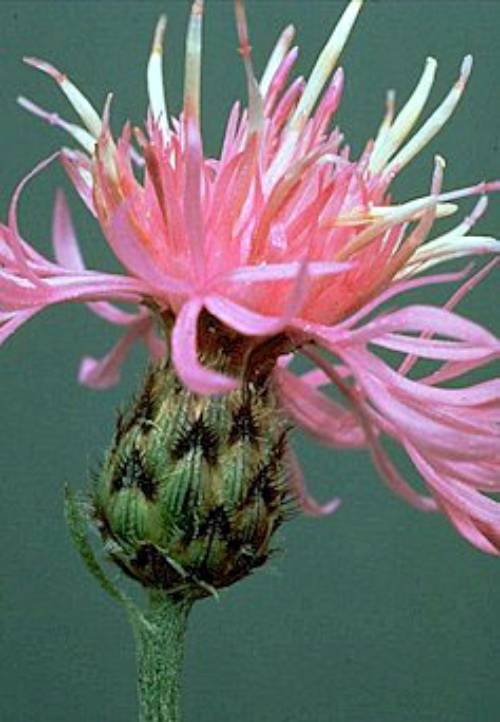
Why it's a noxious weed
Spotted knapweed can rapidly spread in disturbed areas, wildlands, and pastures. In natural areas spotted knapweed can outcompete native plants and increase soil erosion and wildfire risk. It has low nutritional value and crowds out desirable forage plants, degrading pastures and reducing productive land.
The first observation in Washington was in the San Juan Islands. Spotted knapweed is now found throughout the western United States and Canada.
Plant description
Spotted knapweed grows in a range of habitats but is most often found on relatively dry or well‐drained sites. It is a biennial (2-year life cycle) or short-lived perennial (plants that have a 2+ year life cycle) that will look different depending on its age.
Flowering occurs May – October, depending on climate conditions. Flowerheads have distinct bracts (small leaves or scales at the base of a flower). Bracts help identify different species of knapweed by size, shape, and color. Spotted knapweed reproduces solely by seed and the seeds can remain viable in the soil for up to 8 years. Seeds are spread by wind, animals, mowing, and moving contaminated soil. Dead stems from the previous year remain standing after setting seed.
In all stages plants have deeply lobed grayish-green leaves and a stout taproot. The first-year plants are rosettes (a circular arrangement of leaves growing close to the ground).In the second year, the mature plants are upright with branching stems covered in small white hairs. It can grow up to 5 feet tall.
The stem leaves are smaller than basal leaves. Flowers are small, light purple to pink. Bracts have triangular black/brown tips that give them a spotted appearance.
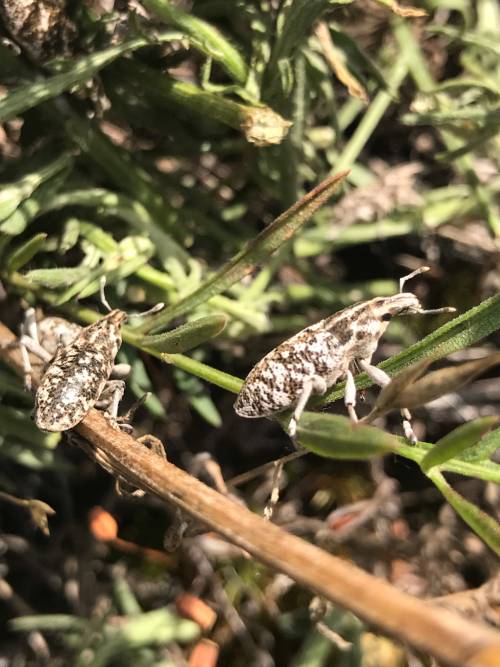
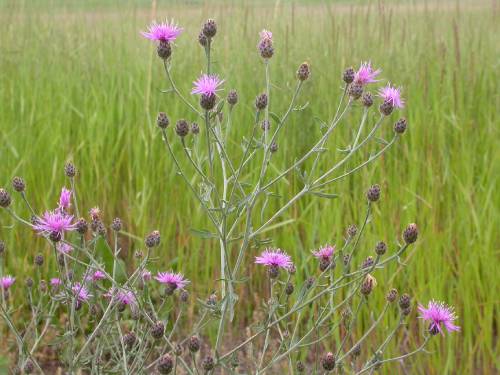
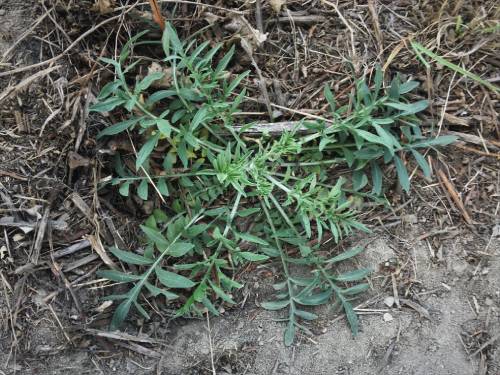
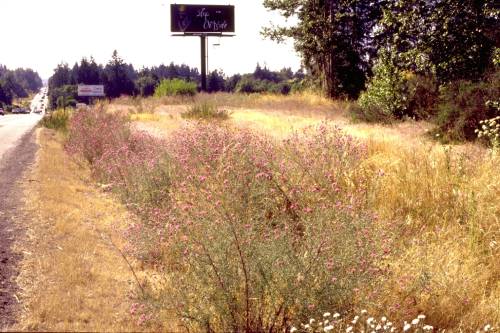
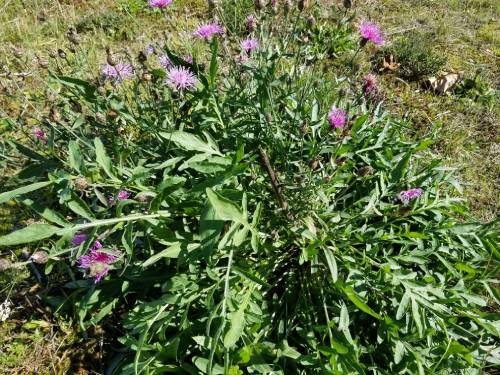

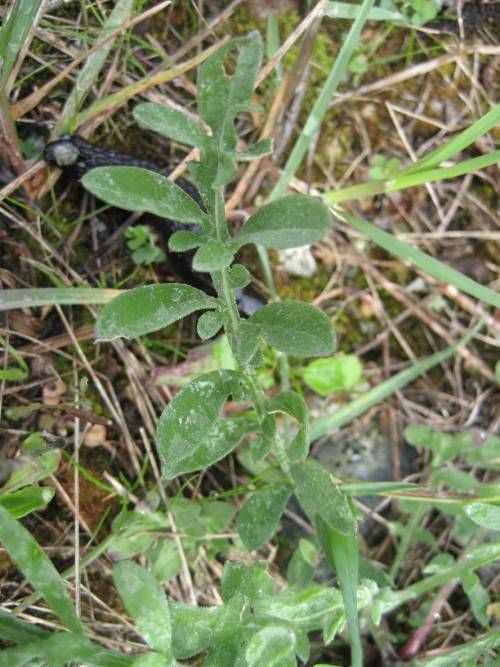
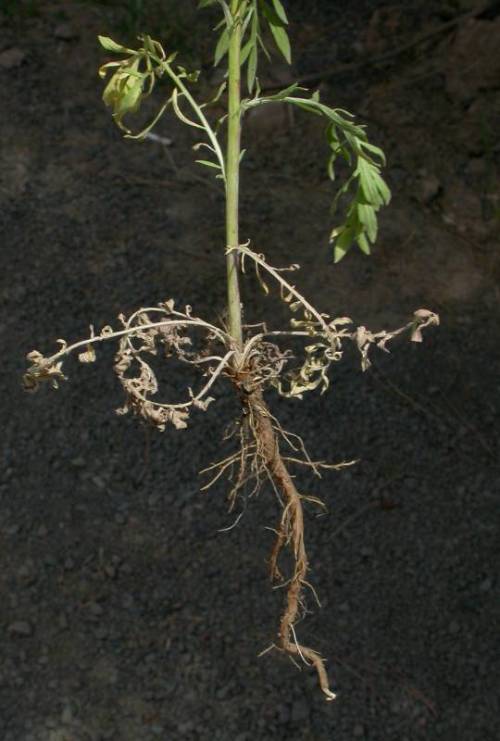
Be aware of look-alike plants
Many species of knapweeds look alike and identification can be difficult. Traits that help tell them apart are bracts on the flowerheads, color of the flowers, and leaf shape.
Other regulated noxious weed species in King County that may be confused with spotted knapweed include meadow knapweed (Centaurea × gerstlaueri), bighead knapweed (Centaurea macrocephala), Russian knapweed (Rhaponticum repens), diffuse knapweed (Centaurea diffusa), brown knapweed (Centaurea jacea), black knapweed (Centaurea nigra), and yellow starthistle (Centaurea solstitialis). Please contact us with photos if you need help identifying any of these.
This knapweed ID brochure is a resource that compares these look-alike species and offers helpful identification tips.
When in doubt, take photos and share them with us or report them on iNaturalist.
What to do if you find it
Property owners are required to control spotted knapweed on lands that they manage. Please notify us if you see spotted knapweed growing in King County.
Our program staff can provide the property owner or appropriate public agency with site-specific advice on how best to remove it. We map all known locations of regulated noxious weeds such as spotted knapweed in order to help us and others locate new infestations in time to control them.
Control methods
We recommend using a combination of methods to control noxious weeds. In areas with few weeds, it is important to act quickly before they become harder to control. Make a long-term plan as it often takes several years to get rid of most weeds. Start in the least infested areas first and then move into more heavily infested areas.
For more in-depth control information, read Best Management Practices (BMP) for spotted knapweed
Manual control
Small infestations of spotted knapweed can be dug out with a hand tool or pulled by hand. Manual control is easiest when soils are wet and/or loose. When digging or pulling, remove as much of the long taproot as possible to prevent the plant growing back.
Mechanical control
Mowing is not a viable control method for spotted knapweed. Plants will re-sprout and flower in the same season when mowed and can flower below the level of the mower. Knapweed that is regularly mowed can persist as a short-lived perennial (plants that have a 2+ year life cycle) rather than dying after seed set.
Repeated rototilling or plowing will effectively control spotted knapweed. Discing will control young plants and seedlings, but established plants can survive if the taproot remains.
Cultural control
In pastures, good grazing practices and management of grass and forage plants will greatly improve control of knapweed. Planting desirable species in any area will help prevent weed infestations.
Biological control
Several biocontrol agents are used on spotted knapweed. Some of the most common are the knapweed root weevil Cyphocleonus achates, the blunt knapweed flower weevil Larinus obtusus, and the lesser knapweed flower weevil Larinus minutus. These insects feed on roots and seeds and take many years to have a significant impact on an infestation. They can only reduce a population, not eradicate it. Only recommended for large infestations or where other methods are not feasible.
For more information about these biocontrol agents, please visit Biocontrol Factsheets - NAISMA.
Chemical control
Stay safe when using herbicide:
- Always read the label before use.
- Wear a long-sleeved shirt, long pants, shoes, and eye protection.
- Follow state and local regulations.
Herbicide can be an efficient method for larger infestations. The best time to apply to knapweed is in the spring while plants are growing taller and getting buds, but before flowering. In grassy areas, it’s best to use selective broadleaf herbicides such as triclopyr or 2,4-D. They won’t damage the grass, which helps suppress meadow knapweed. Using glyphosate in spring is also effective but it will kill any contacted grasses, so you’ll want to add new vegetation afterward. New knapweed plants can also be treated in the fall.
For specific chemical recommendations, please refer to the PNW Weed Management Handbook.
Disposal instructions
For small infestations cut gorse into smaller pieces and put into heavy duty garbage bags for disposal. Composting seed pods at home or in municipal yard waste is not recommended.
Noxious Weed Disposal - Washington State Noxious Weed Control Board

 Translate
Translate